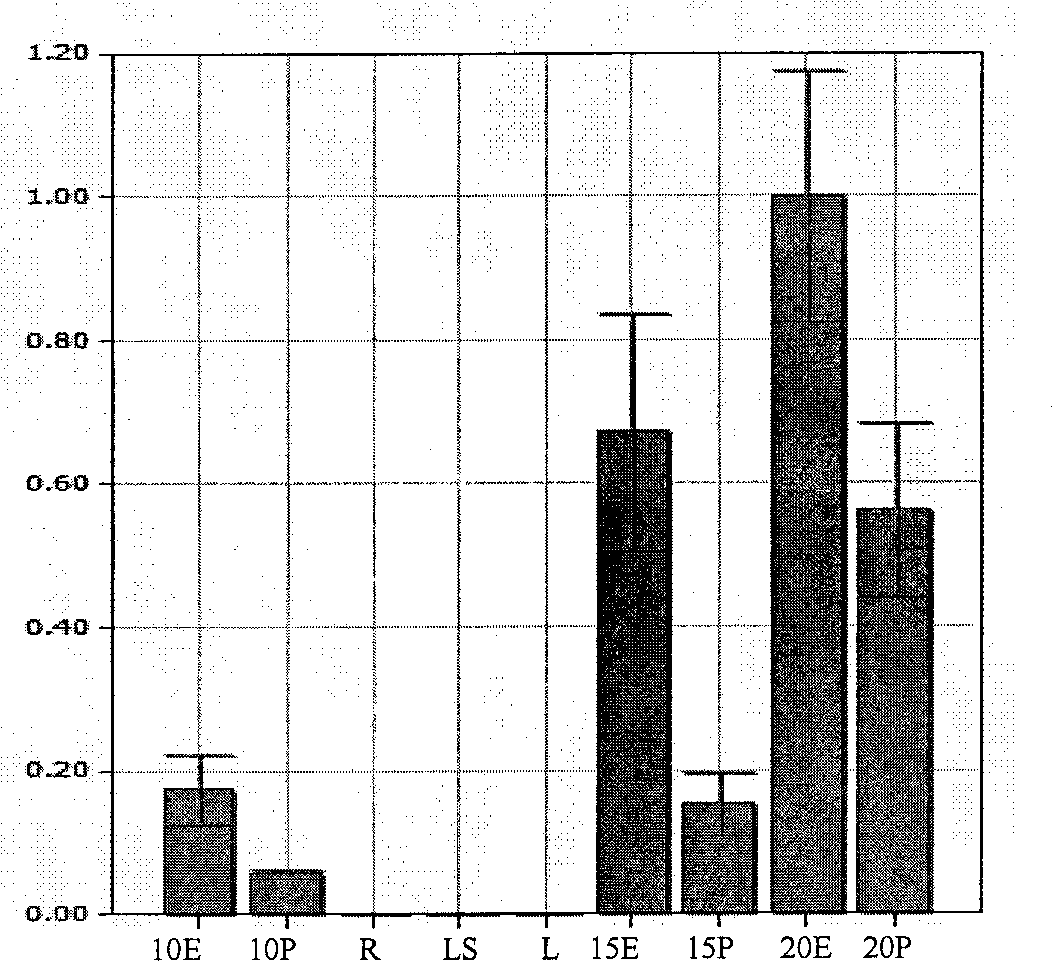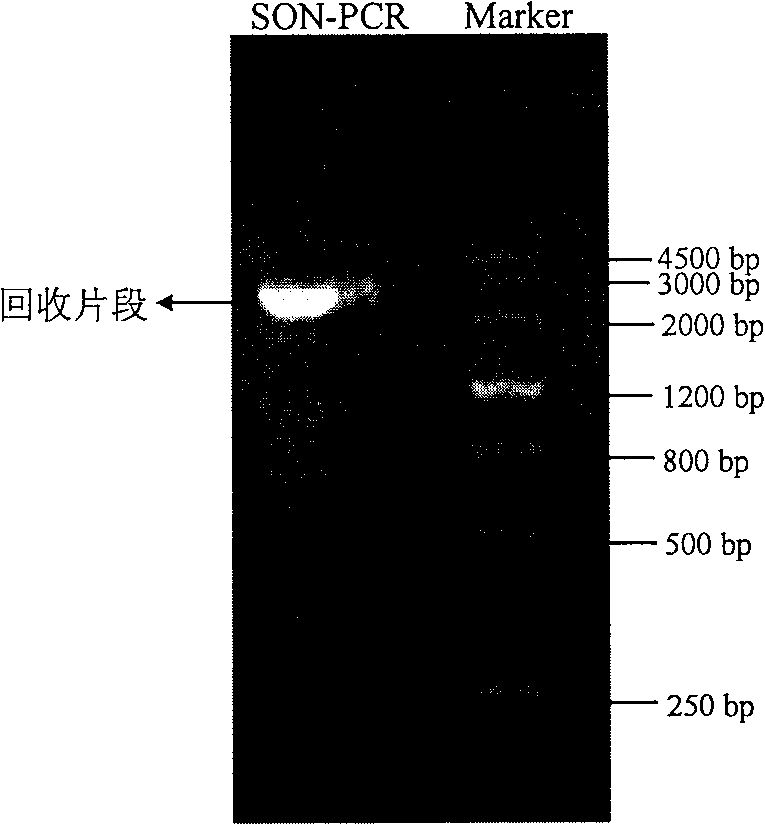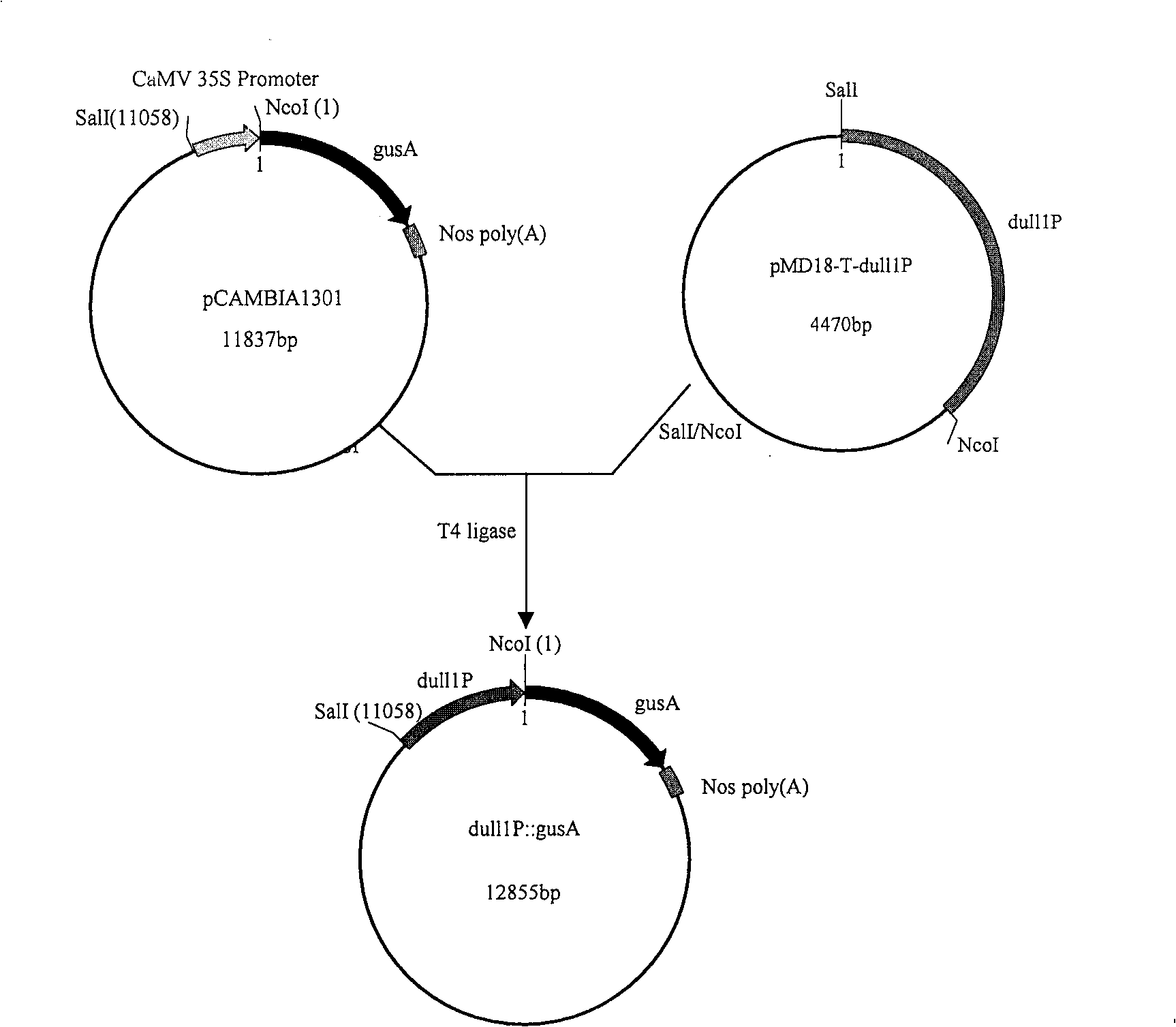Starch synthase gene promoter with seed-specific expression and application thereof
A starch synthase and promoter technology, applied in the fields of plant molecular biology and plant genetic engineering, can solve problems such as activity restriction
- Summary
- Abstract
- Description
- Claims
- Application Information
AI Technical Summary
Problems solved by technology
Method used
Image
Examples
Embodiment 1
[0118] Example 1: Analysis of maize dull1 gene expression site
[0119] 1. Extraction of total RNA from different tissues of corn in different periods
[0120] Take 50-100 mg of fresh tissue or tissues preserved in liquid nitrogen at -70°C, grind with liquid nitrogen, place in a 1.5 mL centrifuge tube, add 1 mL of Trizol (purchased from Invitrogen) and shake well, and let stand at room temperature for 5 minutes. Add 0.2mL chloroform, shake for 15sec, and let stand for 2min. Centrifuge at 12000r / min for 15min at 4°C and take the supernatant. Add an equal volume of ethylene glycol butyl ether, gently mix the liquid in the tube, and let it stand in an ice bath for 1 hour. Centrifuge at 10000r / min for 10min at 4℃, discard the supernatant. Add 1 mL of 75% ethanol and gently wash the precipitate. Centrifuge at 7500r / min at 4℃ for 5min, and discard the supernatant. Add 1 mL of 100% ethanol and gently wash the precipitate. Centrifuge at 7500r / min at 4℃ for 5min, discard the supernatant, d...
Embodiment 2
[0151] Example 2: Cloning of 5'flanking sequence of corn dull1
[0152] 1. Extraction of maize genomic DNA:
[0153] Weigh 1.0g of fresh corn leaves, cut them into 1cm pieces, put them in a pre-cooled mortar, and quickly grind them into uniform powder with liquid nitrogen. Before the tissue is dissolved, put all the powder into a 5mL centrifuge tube. Quickly add 2 mL of CTAB extraction buffer incubated at 65°C to the centrifuge tube, shake gently to mix, and then bath at 65°C for 30 min-1h, add an equal volume of chloroform: isoamyl alcohol (24:1), and mix gently. Shake for 15min. Centrifuge at 10000r / min for 8min at room temperature. Pipette the supernatant into a clean 5mL centrifuge tube. Add an equal volume of pre-cooled isopropanol (4°C) and centrifuge at 10000r / min for 5min at room temperature. The supernatant was discarded, and the precipitate was washed twice with 75% ethanol and once with absolute ethanol. Dry in a vacuum desiccator for 10 min, dissolve the DNA with an ap...
Embodiment 3
[0204] Example 3: Verification of dull1P promoter's promoter activity
[0205] 1. Construction of plant expression vector:
[0206] According to the SEQ ID No:1 sequence, design and synthesize a promoter primer containing restriction enzyme sites, use the 3.5Kb sequence linked to the sequencing vector pMD18-T as a template to clone the 1.8Kb dull1 gene promoter by PCR amplification Subsequence.
[0207] Pde 1: 5’---CACTCGTCGACGCCTTTGAGACTG---3’
[0208] Pde 2: 5’---TCTCCATGGCTAGAAGGGGAAGAAAAGAAG----3’
[0209] The underlined part of Pde1 is the SalI restriction site contained in the sequence itself, and the underlined part of Pde2 is the added NcoI restriction site.
[0210] The reaction system is as follows:
[0211] 10×LA PCR buffer 5μL
[0212] dNTP(10mmol / L) 5μL
[0213] MgCl 2 5μL
[0214] Pde1(10mmol / L) 2μL
[0215] Pde2(10mmol / L) 2μL
[0216] Die plate (10ng / μL) 0.5μL
[0217] LA Taq enzyme (5U / μL) 0.5μL
[0218] ddH 2 O 30μL
[0219] Total volume 50μL
[02...
PUM
| Property | Measurement | Unit |
|---|---|---|
| Diameter | aaaaa | aaaaa |
Abstract
Description
Claims
Application Information
 Login to View More
Login to View More - R&D Engineer
- R&D Manager
- IP Professional
- Industry Leading Data Capabilities
- Powerful AI technology
- Patent DNA Extraction
Browse by: Latest US Patents, China's latest patents, Technical Efficacy Thesaurus, Application Domain, Technology Topic, Popular Technical Reports.
© 2024 PatSnap. All rights reserved.Legal|Privacy policy|Modern Slavery Act Transparency Statement|Sitemap|About US| Contact US: help@patsnap.com










